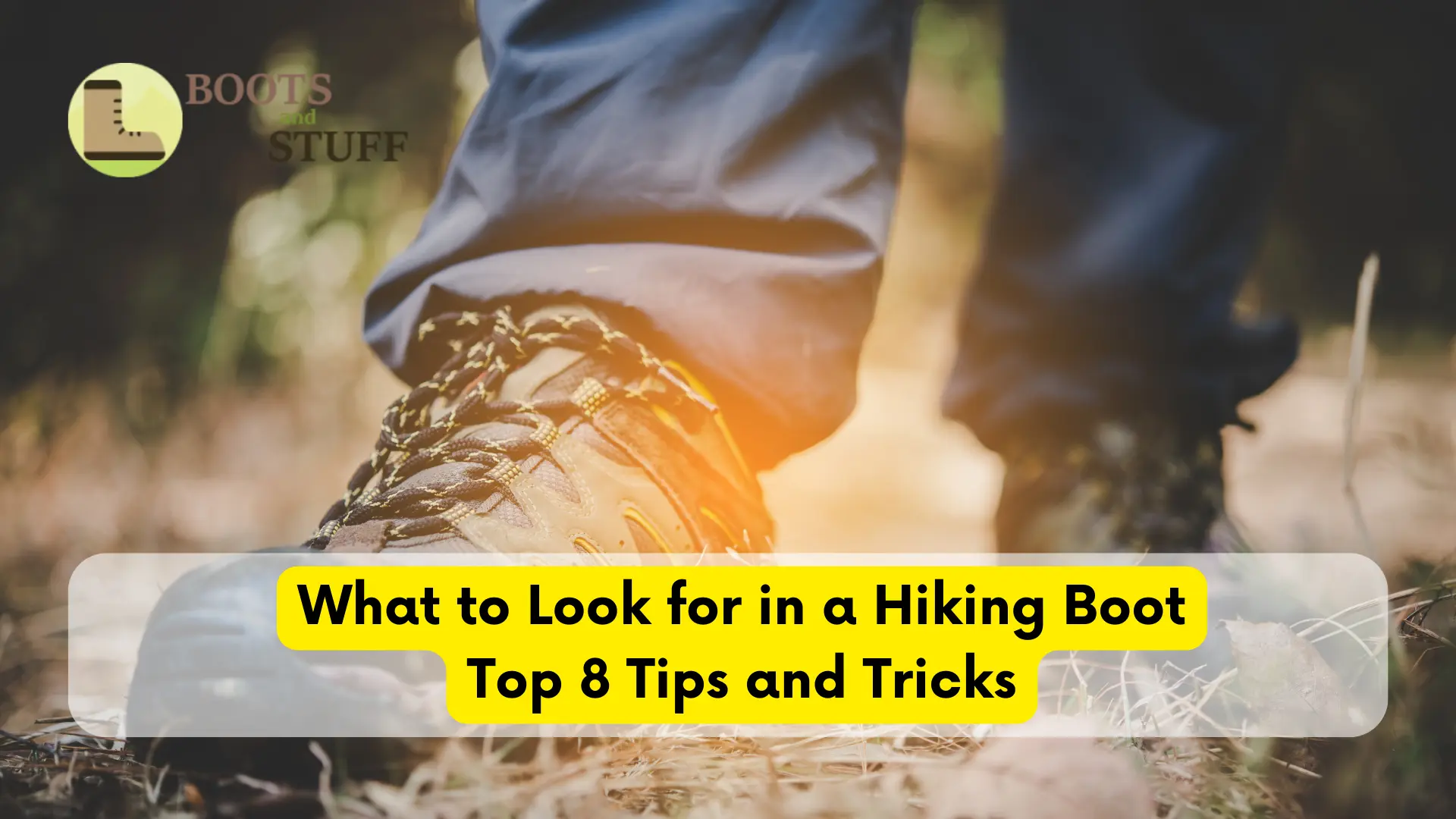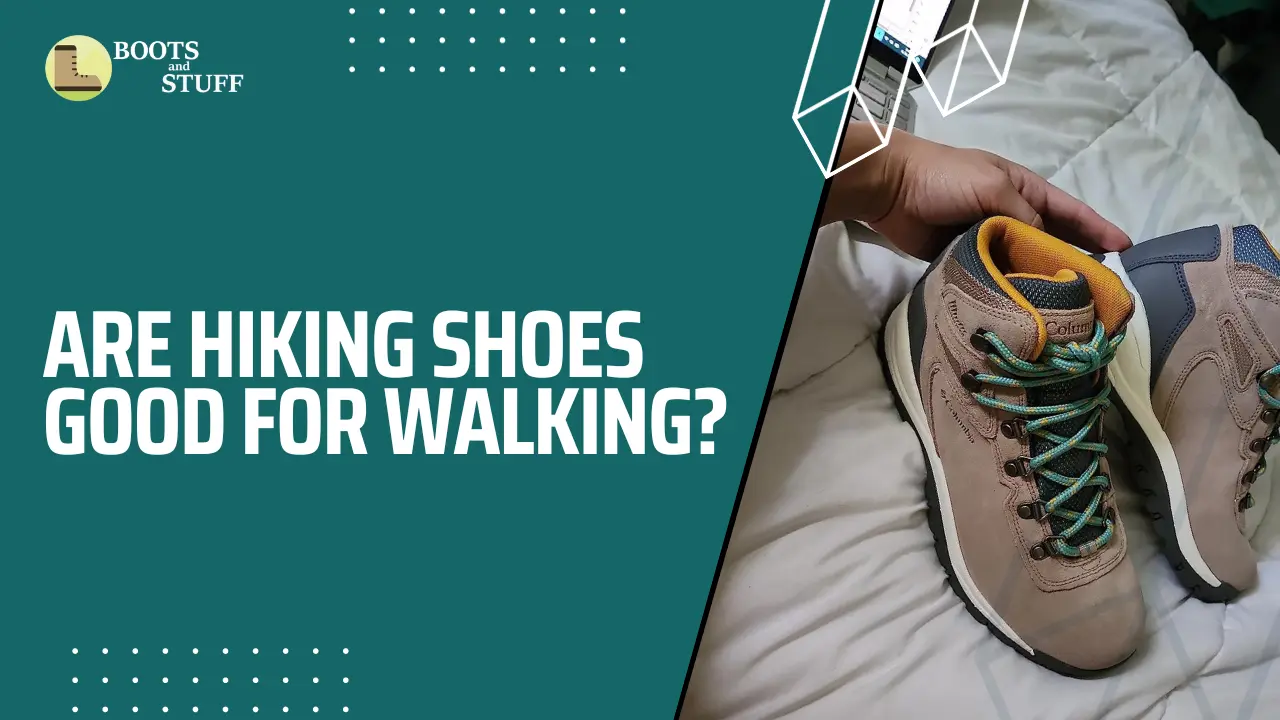Buying hiking boots can be annoying sometimes; finding the right fit, adjusting it to your comfort, durability, and so much more. Many professional hikers fall behind in competitions just because of their shoes. It is the small things that make the change.
A couple of crucial things should be checked before making a purchase. Usually, beginner hikes don’t understand what to look for in a hiking boot. Hence, they make the wrong decisions.
Well, you don’t have to worry about that, as today we will break down everything you should know before buying a hiking boot. Don’t worry; we’ve got to the bottom of it; this is the only guide you’ll need.
Let’s get started.
Key Takeaways:
- Understanding your hiking style is essential.
- The fit of your boots, cushioning, and support go hand in hand.
- Resistance to slipping is traction.
- Waterproof hiking boots are always helpful.
Contents
Here are The Top 8 Tips and Tricks to Look For in a Hiking Boot :

1. Specify your Hike Styles
Alright, we’ll spare you the repetitive paragraphs on hiking boots and whatnot. Before buying a hiking boot, you should first understand the type of hiking you’ll be performing.
Because hiking styles play a significant role in hiking boots, for example, if you prefer running on the trail, maybe you shouldn’t get a mountaineering shoe as they are made for high-intensive hiking rather than running.
If you go on runs on terrains, you should get a lightweight low-cut hiking shoe that is great for jogging or even sprinting. We recommend getting a pair of backpacking hiking shoes as they are fantastic for overall hikes.
2. The Fit of Your Hiking Boots
Here’s the thing; even if you spent $400 on a pair of hiking boots, your money has gone to waste if they don’t fit you right.
Proper fit is crucial for hiking shoes as they decide whether you’ll enjoy your hike. Hiking shoe fitting and comfort are directly connected. Correct fitting = maximum comfort; if not, then you are stuck with stiffness or, worst case scenario, blisters.
Another thing to keep in mind, if you are buying shoes for females, understand that getting a smaller size of the male versions won’t fit them. Female feet are narrower than more negligible, so we recommended the person who would wear the shoes try them before buying.

3. The Comfort of Your Hiking Shoes
If you feel uncomfortable in your new hiking shoes, don’t buy them. Look, hiking boots are not something you wear on a casual night out or at the club, where you can just ignore the discomfort for a couple of hours.
Even if you’re hiking for 30 minutes, it is physical labor and will cause you pain. Hiking should be enjoyable, not something where you constantly count minutes til you get home.
If your feet feel too tight, your feet are getting excessive oxygen, and the muscles are not comfortable. Therefore, causing you pain if not injuries. Therefore, make sure your shoes are compatible with you. Check linings, fabrics, laces, materials, etc., before buying.
4. Support & Cushioning
Hiking footwear needs to give the hiker support with proper cushioning. The midsoles have to be soft spontaneously. Your hiking boot should provide ankle support.
If you’re hiking on rough terrain, wear lightweight, breathable backpacking shoes. We recommend lightweight shoes instead of boots while going on these trails as they are more flexible than boots.
Your shoes should also leave your toes air to breathe. Too snug-fit boots are a red flag; you should wear another pair of shoes then. Going a size higher and leaving space in front of your hiking shoes is essential for airflow.

5. Hiking Boot Material
Hiking boot materials affect your hiking. Generally, there are three types of materials widely used:
Full-grain leather boots:
The most traditional material for hiking boots gives hikers excellent durability and comfort.
Split-grain boots:
Best of both worlds, also known as suede. Primarily found in backpacking boots, great price points, and durability. However, they are the lowest quality leather available in the market.
Synthetics:
Nylon and polyester material where you get a great pair of boots at an expensive rate. The only downside is they’re not durable or provide the most comfort.
The point is that they will rip if your boot is not made of good quality material. You never know if it’s the outer part today or the outsoles. We recommend getting full-grain leather boots; if you can care for them, they will last a long time.
Listen, we know full-grain leather boots are expensive, but save up and get them if you buy them. Thank us later.

6. Traction
Traction is basically preventing slippage. Many companies have based their selling points solely on traction.
Hiking shoes have traction in outsoles and midsoles. Outsoles are the main focus as they will be touching the ground and ultimately stopping slips. Outsoles are made of rubber, and this is the material that increases friction.
And if you did science in pre-school, you know friction is the key to resistance. Feels like a science class here, huh?
7. Waterproof Hiking Boots
Now, before we get into details, consider waterproof hiking boots, always. It doesn’t matter what type of trekking you’re doing.
Waterproof boots will give you extra support and can even carry heavy loads. They help in rainy conditions, which is obvious. You never know when you’ll have to hike through a muddy trail, even if you haven’t planned it.
If you don’t have waterproof hiking boots, your hike might end there. So it’s best to go the extra mile. Besides, the only cons of them are; boots might make your feet feel hot. But considering the advantages, it’s only fair.

8. Protection
Hiking shoes have to protect your boots against the odds. Because your entire feet’s responsibility is up to the boots, this protection is provided by all of the materials of the shoe.
The cushioning, ankle or heel support, overall fit, etc., play a prime role in protecting your feet. Besides, additional things such as having a long tongue or firm laces can help too. A long tongue can stop dirt from getting inside your feet, and the laces provide security for the foot.
It’s really the minor things that make the difference, man. Don’t ignore these, or you never know when you’ll get dirt inside your pretty boots.
Other things to Consider:
Before you click off, these are some things you should check:
- Socks: Get specified hiking socks; cotton socks won’t last.
- Price: No matter how premium they are, you shouldn’t be paying $500 for a pair of hiking boots.
- Laces: Pre-school bow-tie knots won’t work in the long run. Check out our article on how to tie hiking boots for a detailed explanation.
- Gender specification on boots: Boots for men won’t work on females, even a smaller size.
- Understand how hiking boots fit: Give hiking boots a test drive, jump, hike, and see how your toes feel.
With that being said, off you go.
Conclusion
Buying hiking boots might seem easy, but it’s more complex than you think. And it doesn’t have to be that way, with all the key details.
If you’re still confused about what to look for in a hiking boot, let’s make it as simple as possible. Know where you’re hiking, fit, comfort, support, and protection of your boots are essential.
Once you have mastered these, you can then go for others. This post has everything you need before buying a hiking boot. We hope this helped.
Read Our Related Blogs on Hiking Boots:
How To Choose A Hiking Boot- Do’s And Don’ts
How To Clean Hiking Boots – The Right Way




